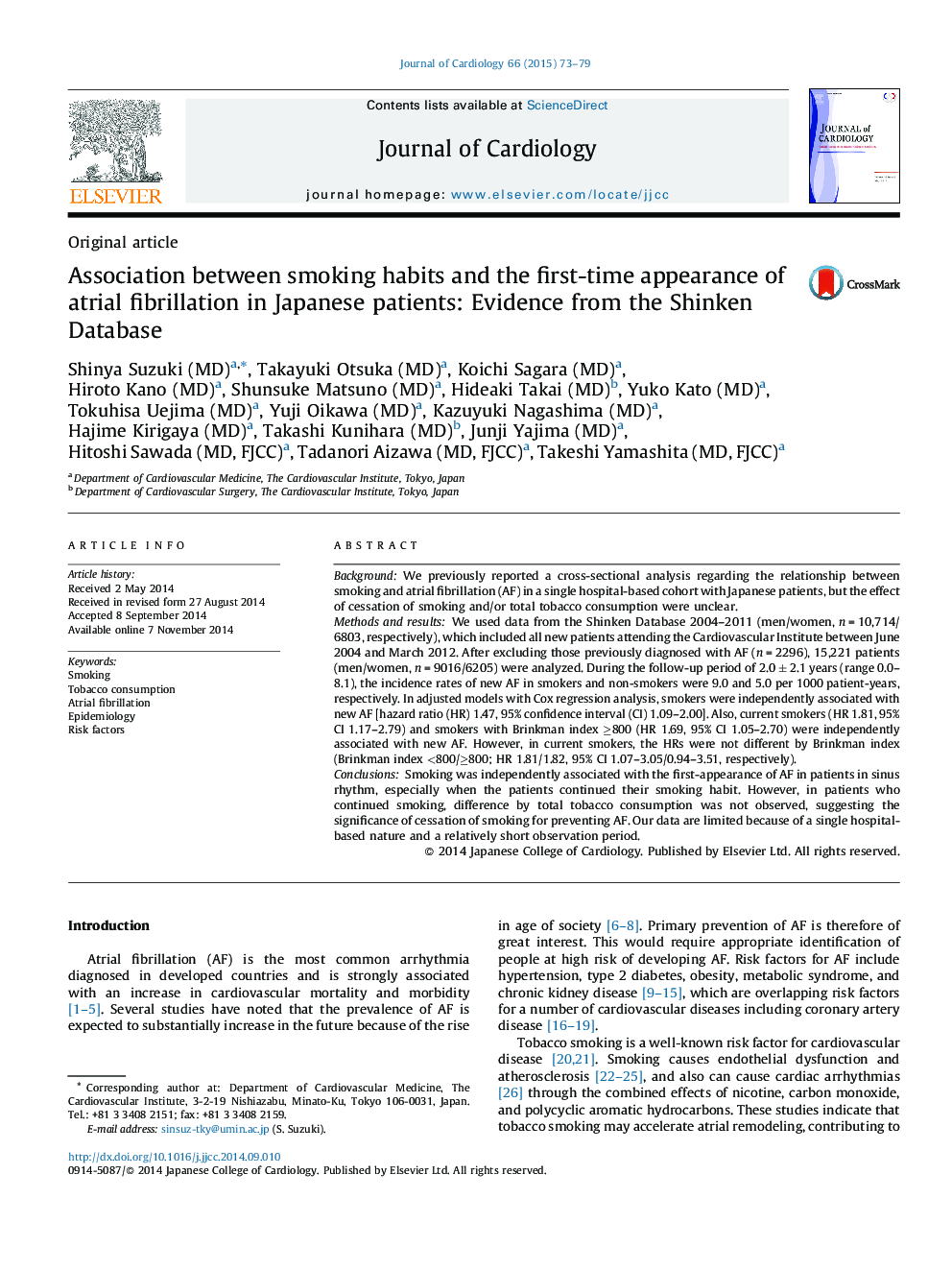| Article ID | Journal | Published Year | Pages | File Type |
|---|---|---|---|---|
| 2962811 | Journal of Cardiology | 2015 | 7 Pages |
BackgroundWe previously reported a cross-sectional analysis regarding the relationship between smoking and atrial fibrillation (AF) in a single hospital-based cohort with Japanese patients, but the effect of cessation of smoking and/or total tobacco consumption were unclear.Methods and resultsWe used data from the Shinken Database 2004–2011 (men/women, n = 10,714/6803, respectively), which included all new patients attending the Cardiovascular Institute between June 2004 and March 2012. After excluding those previously diagnosed with AF (n = 2296), 15,221 patients (men/women, n = 9016/6205) were analyzed. During the follow-up period of 2.0 ± 2.1 years (range 0.0–8.1), the incidence rates of new AF in smokers and non-smokers were 9.0 and 5.0 per 1000 patient-years, respectively. In adjusted models with Cox regression analysis, smokers were independently associated with new AF [hazard ratio (HR) 1.47, 95% confidence interval (CI) 1.09–2.00]. Also, current smokers (HR 1.81, 95% CI 1.17–2.79) and smokers with Brinkman index ≥800 (HR 1.69, 95% CI 1.05–2.70) were independently associated with new AF. However, in current smokers, the HRs were not different by Brinkman index (Brinkman index <800/≥800; HR 1.81/1.82, 95% CI 1.07–3.05/0.94–3.51, respectively).ConclusionsSmoking was independently associated with the first-appearance of AF in patients in sinus rhythm, especially when the patients continued their smoking habit. However, in patients who continued smoking, difference by total tobacco consumption was not observed, suggesting the significance of cessation of smoking for preventing AF. Our data are limited because of a single hospital-based nature and a relatively short observation period.
